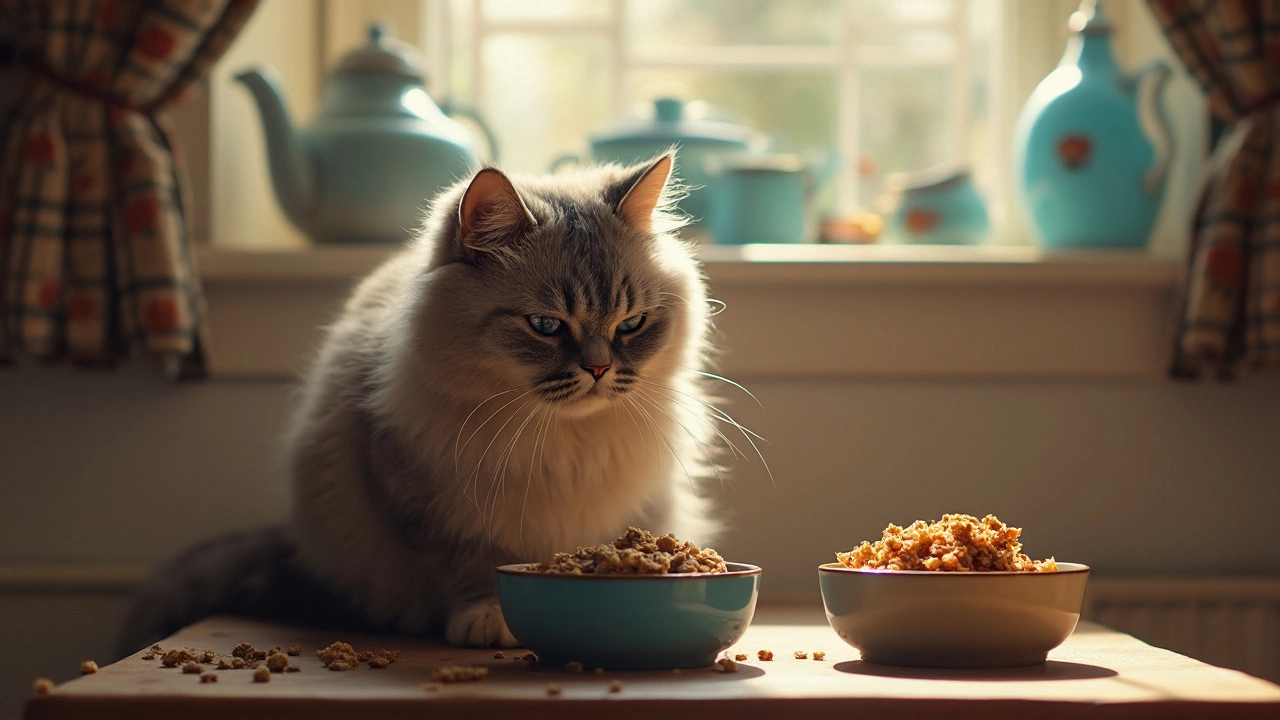Pate vs Shreds Cat Food: What’s the Real Difference?
When you stare at the cat food aisle, the choices can feel endless. Two of the most common wet options are pate (smooth, gravy‑filled) and shreds (meaty strands in sauce). Both look tasty, but they aren’t identical. Let’s sort out the facts so you know which one fits your feline’s needs.
Texture and Eating Experience
Pate is pureed meat and organ mix, usually with a rich broth. It’s soft, almost like mousse, so older cats or those with dental issues love it. Shreds, on the other hand, contain visible pieces of meat or fish that are pulled into thin strips and bathed in sauce. The texture mimics a bite‑size chew, which can be more engaging for younger, active cats.
If your cat prefers to “lap” food or has trouble chewing, pate is a safe bet. If your kitty likes to gnaw a little before swallowing, shreds keep them entertained and may slow down fast eaters.
Nutrition and Moisture
Both formats can deliver the same quality ingredients – real meat, veggies, and essential nutrients. The real difference lies in moisture content and how the food is processed. Pate is typically blended longer, which can trap more water, giving it a higher moisture level (often 80 %+). Shreds may have slightly less moisture because the meat is cut into strips, but good brands still hit the 75‑80 % range.
Higher moisture helps with urinary health, especially for cats prone to stones. If your cat drinks little water, a water‑rich pate could be a smarter choice. Conversely, if your cat enjoys a bit of chewing and you supplement with fresh water, shreds work just fine.
Watch the ingredient list. Some cheaper shreds use meat by‑products and extra fillers to hold the strands together. Pates can also contain fillers, but the fine texture sometimes masks low‑quality ingredients. Stick to brands that list a specific meat (like “chicken breast” or “salmon”) as the first ingredient.
Practical Tips for Feeding
Mix‑and‑match is a simple way to keep both taste buds and nutrition balanced. Offer a pate meal one day, a shred the next – this variety can prevent boredom and encourage a broader palate.
When transitioning, start with a 75 % old food, 25 % new mix, then flip the ratio over a few days. This helps avoid tummy upsets.
Measure portions based on your cat’s weight and activity level. Many owners overfeed wet food because it feels lighter than kibble, but the calories add up fast.
Finally, store opened cans in the fridge and use within two days. Spot any off smells or texture changes – even high‑quality wet food can spoil quickly.
Bottom line: choose pate if your cat needs extra moisture or has dental concerns; go for shreds if your cat enjoys a bit of chew and you want to add some texture variety. Either way, read the label, keep portions in check, and watch your cat’s reaction. Happy feeding!

Pate vs Shreds Cat Food: Which Texture Wins for Your Feline?
Wondering if pate or shreds is better for your cat? Explore texture, nutrition, and tips for picky eaters to help your cat thrive.
View more